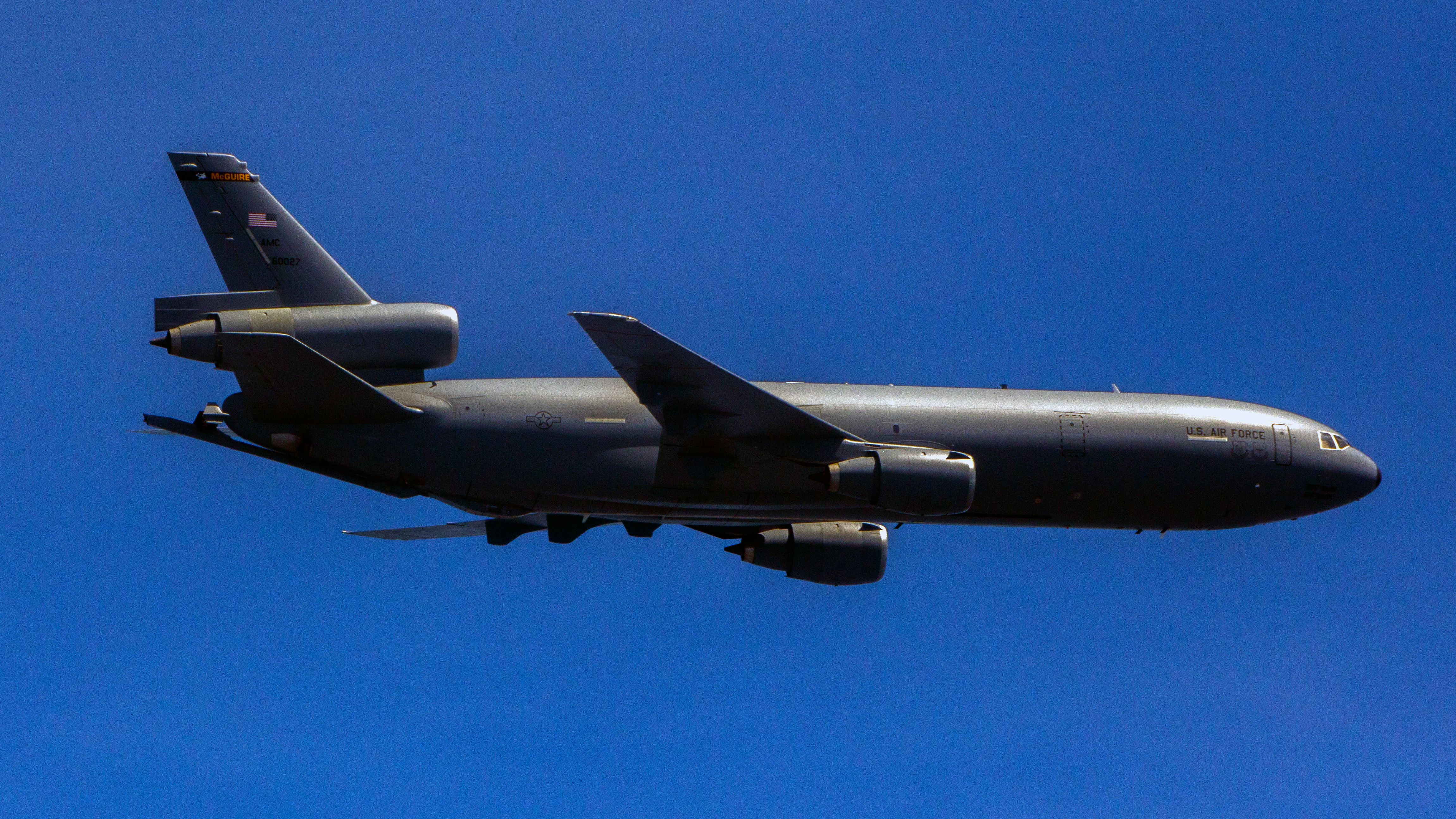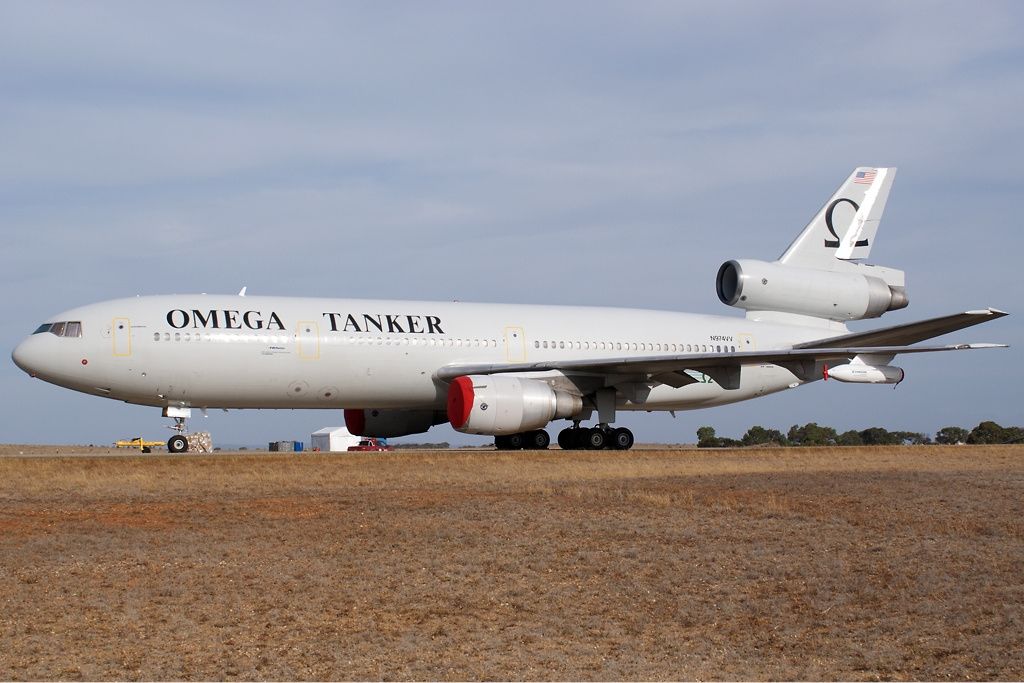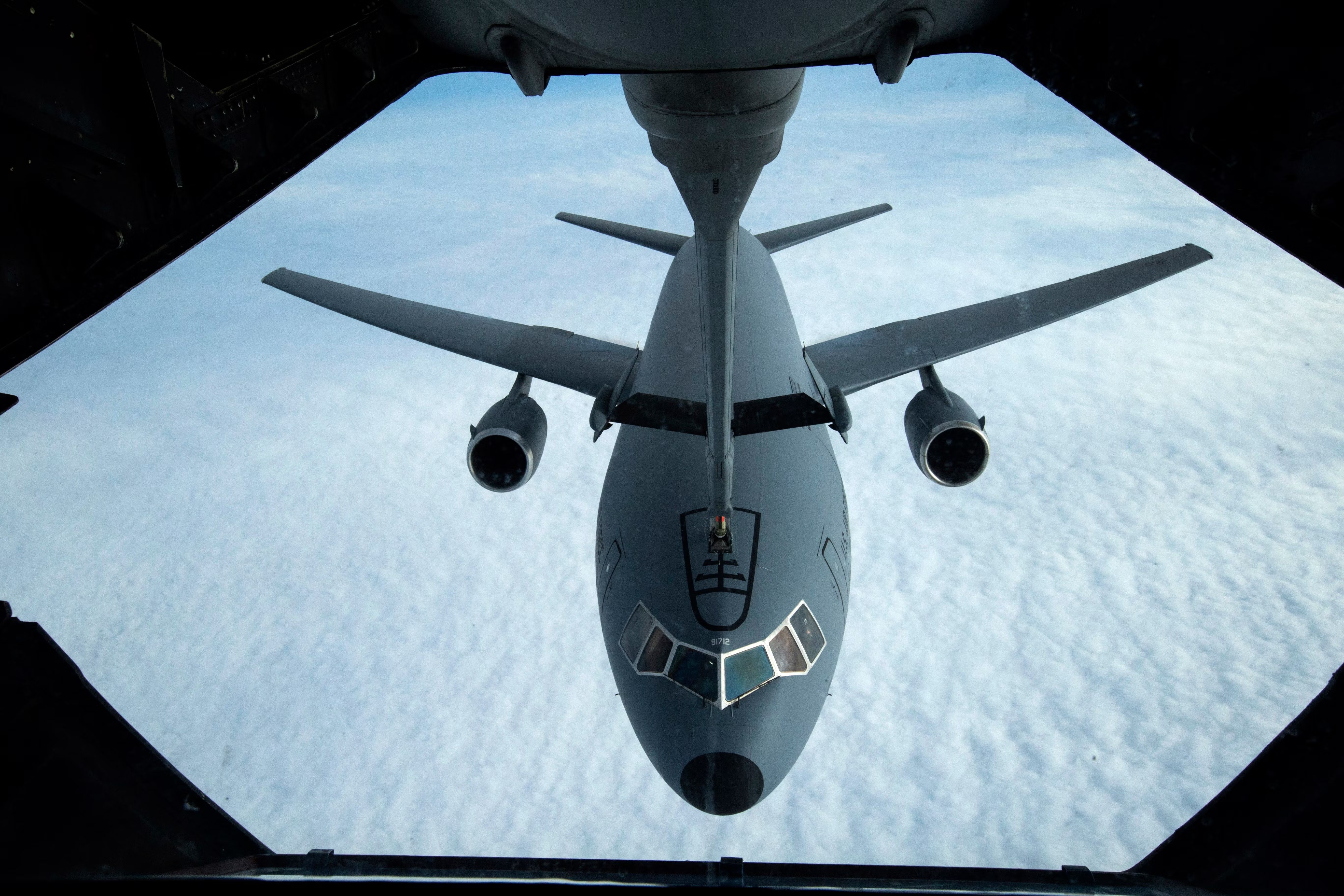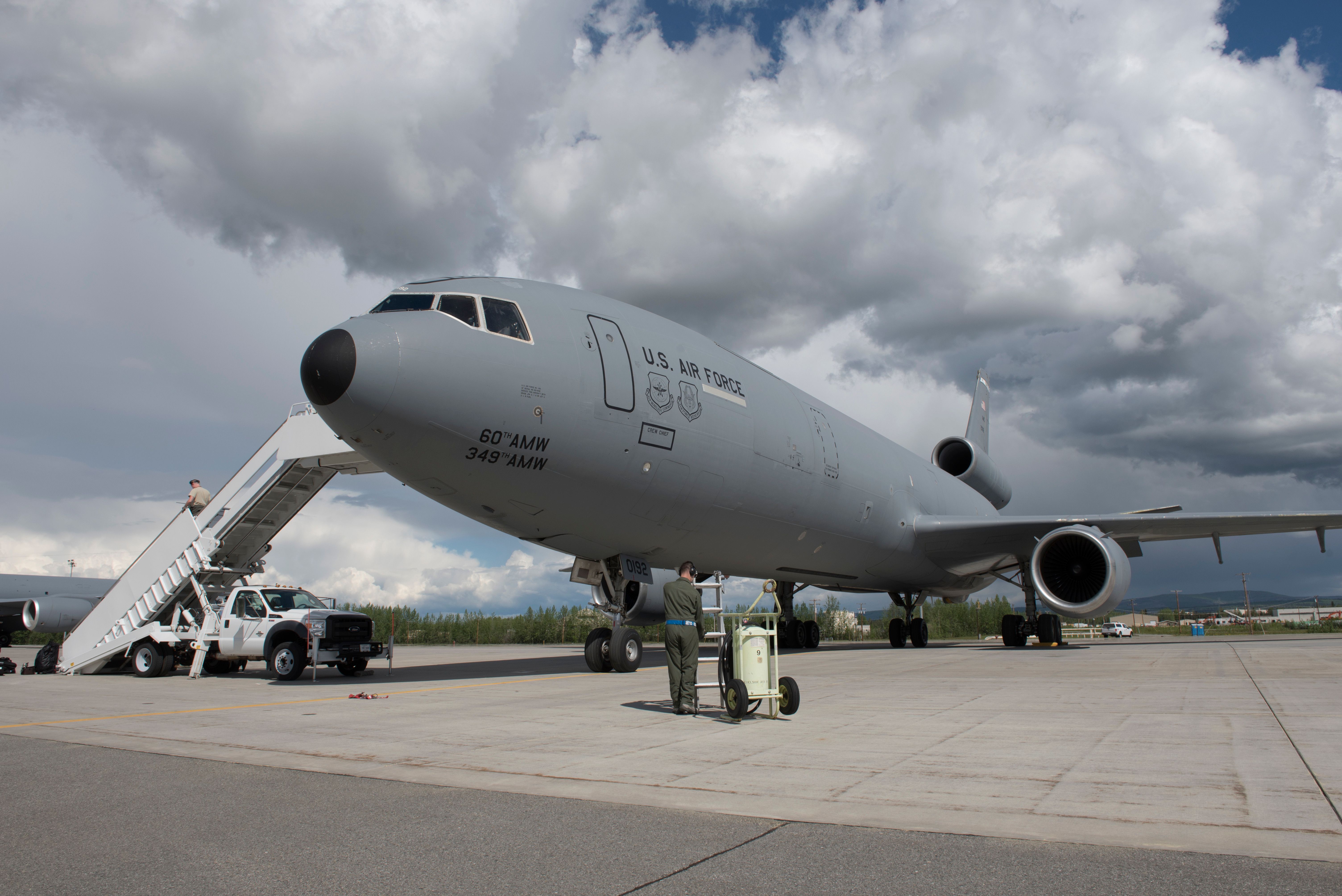Summary
- The KC-10 Extender first flew 43 years ago and refuels a variety of aircraft.
- The plane was designed to supplement older tankers, entering service with the USAF and Royal Netherlands Air Force.
- The KC-10 has a high fuel capacity, can refuel using a boom or hose system, and was mass-produced with three main variants.
By the 1980s, the United States Air Force had come to understand the importance of air-to-air refueling and noted the critical need to keep fighters airborne for extended periods of time. With air-to-air tankers deployed alongside fighter jets, the Air Force could secure extremely large areas of airspace, enforce no-fly zones, and maintain an extended presence anywhere a conflict might arise, but early-generation tankers were no longer meeting the organization's needs.
At the same time, more impressive and capable jet aircraft were taking to the skies, with commercial airliners proving to be the ideal platform for conversion to air-to-air tankers. With some modifications, manufacturers could transform successful passenger widebodies into air-to-air tankers and, in the process, score lucrative defense contracts.
McDonnell Douglas, a well-respected manufacturer, sought to do exactly that when they noticed the conversion potential of their popular DC-10 airliner. In this article, we will take a deeper look at the story of the McDonnell Douglas KC-10 Extender.
A brief overview
The KC-10 Extender first took flight 43 years ago and has reliably served the United States Air Force since then. The aircraft has come to be not just a reliable tanker for fighter jets like the F-16 Fighting Falcon but also for other kinds of military aircraft.
Get all the latest aviation news right here on Simple Flying!
Over an eight-year production run from 1979 to 1987, a total of 62 KC-10 Extender aircraft rolled off of the assembly lines of manufacturer McDonnell Douglas, with units entering service primarily with the United States Air Force, according to Military.com. The plane would eventually fly for the Royal Netherlands Air Force as well, who have since retired the jet alongside civilian air-to-air refueling operator Omega Aerial Refueling Services.
Initially, the aircraft was designed to supplement the KC-134 Stratotanker, another air-to-air refueling plane developed from the older-generation Boeing 707. The plane stands as the second McDonnell Douglas transport aircraft to enter service with the United States Air Force, following the organization's purchase of a military-configured DC-9.
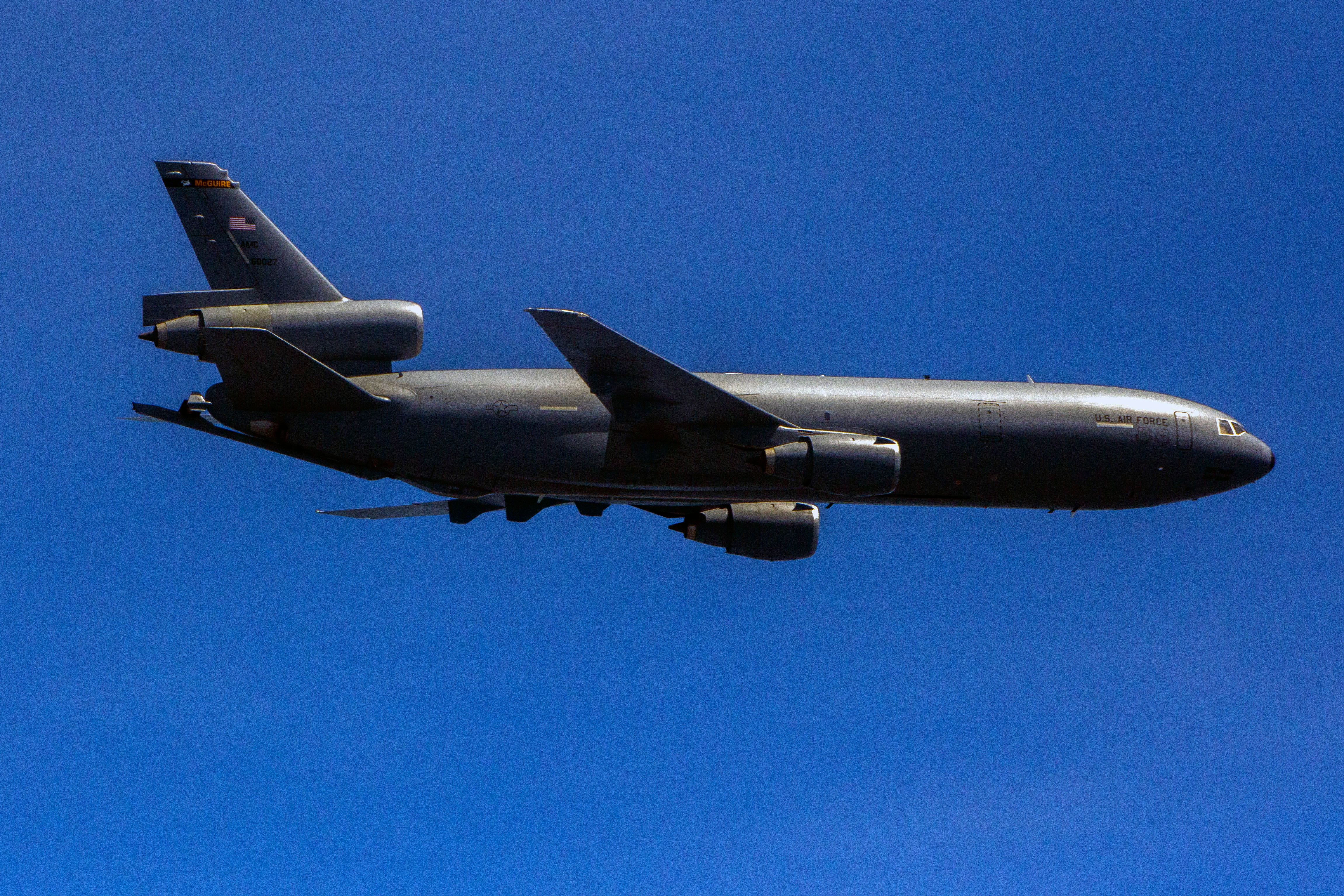
42 Years Of Flight: The McDonnell Douglas KC-10 Extender's History
A look at one of the United States Air Force’s key assets.Early development
As previously mentioned, the KC-10 Extender is based on the DC-10 airliner, which first entered commercial service in 1971. It was the first widebody aircraft from McDonnell Douglas at the time and would go on to serve close to 50 airlines carrying passengers all over the globe.
After 1971, McDonnell Douglas began working on a military version of the jet for use by the USAF. According to the Air Mobility Command Museum, the Air Force formally selected the MD-10 on December 19th, 1977, as part of its pursuit of an aircraft to supplement the KC-135 Stratotanker in aerial refueling operations. The US military felt the need for a new aerial refueling aircraft towards the end of the Vietnam War, as the KC-135 was falling short on some parameters.
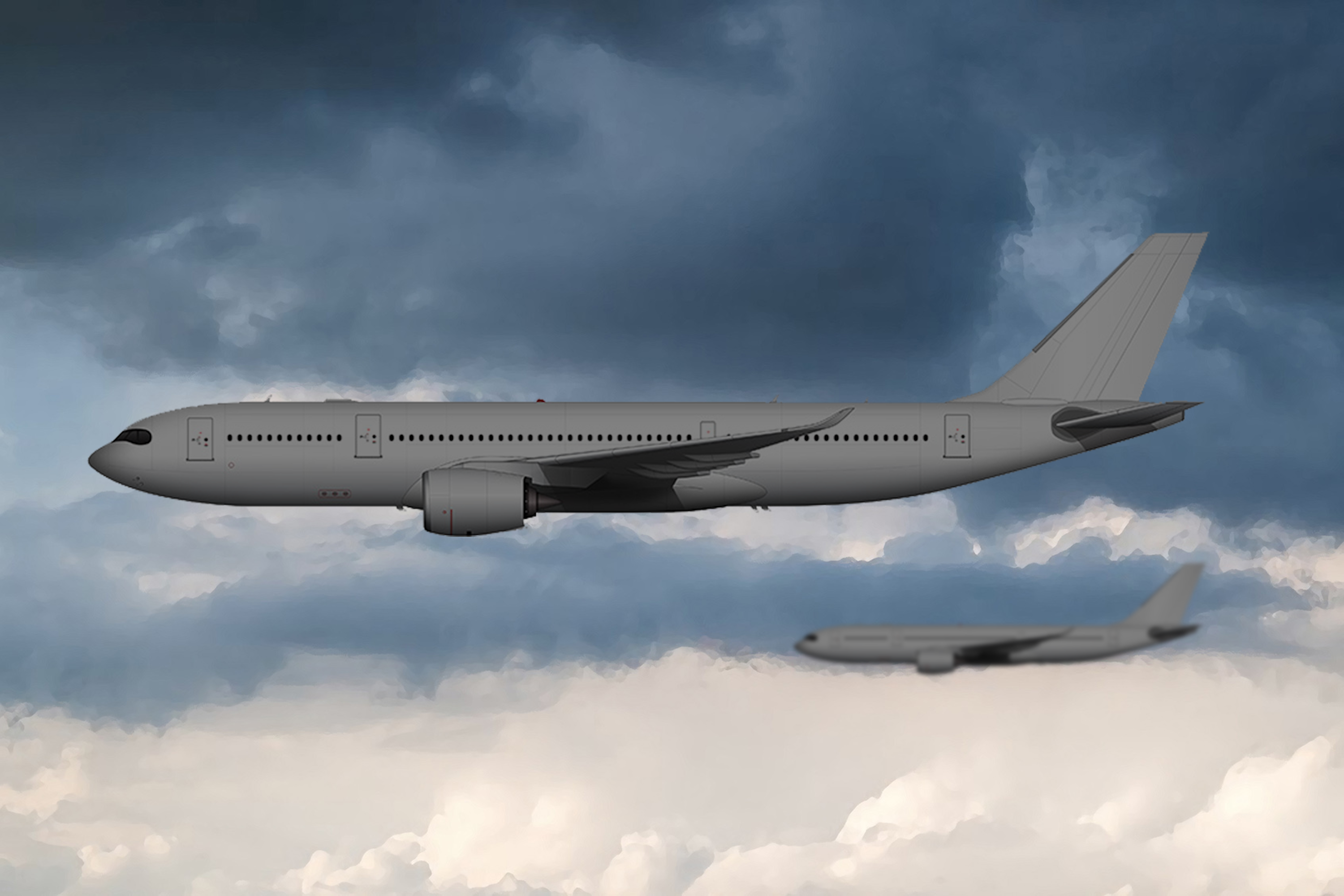
A330neo MRTT? Airbus Considers Development Of A New Tanker Transport
Airbus is exploring the possibility of updating the military variant of its A330.The KC-10’s first flight was on July 12th, 1980, and the first aerial refueling sortie was performed later the same year on October 30th on a C-5 transport aircraft. Deliveries to the USAF followed quickly after, with the first airframe handed over on March 17th, 1981. Key moments in the development timeline can be seen below:
- The DC-10 and Boeing 747 were tested together at Edwards Air Force Base in 1972 to assess tanker potential
- The Yom Kippur War broke out in 1973, which demonstrated the need for advanced air-to-air refueling operations
- The Advanced Tanker Cargo Aircraft Program was launched in 1975 and tested four aircraft, including the DC-10
- In 1977, the KC-10 Extender was selected
- The aircraft finally entered service in March 1981, seeing its first combat during the US invasion of Panama in 1989.
The aircraft's capabilities
Despite sharing around 88% of components with the commercial variant, the KC-10 Extender is a highly capable refueler. Major modifications to the military version include upgraded military avionics, satellite communications, an air-to-air refueling mechanism, and the addition of six extra fuel tanks. As a result, the KC-10 can carry more than 356,000 lbs of fuel, which is nearly twice as much as the KC-135, according to the Air Force. Performance specifications can be seen in the table below:
|
Category: |
KC-10 Extender Specification: |
|---|---|
|
Maximum speed: |
538 miles per hour |
|
Range: |
3,800 nautical miles with maximum cargo capacity |
|
Service ceiling: |
42,000 feet |
The KC-10 can refuel other aircraft either using a refueling boom or a hose & drogue system. It uses a fly-by-wire system for refueling operations under the command of a boom operator. During boom operations, fuel transfer rates can go up to 1,100 gallons (4,180 liters) per minute. On the other hand, fuel is transferred significantly slower in hose and drogue refueling operations at just 470 gallons (1,786 liters) each minute.
In addition to aerial refueling, the Extender can also carry passengers and cargo. Maximum passenger capacity is capped at 75, and there is enough space for 17 to 27 cargo palettes depending on the number of passengers onboard. A fully loaded KC-10 Extender can fly for 4,400 miles without midair refueling. The aircraft was produced in three main variants:
|
Variant: |
Purpose: |
|---|---|
|
KC-10A |
Original production tanker variant |
|
KDC-10 |
Conversion of civilian aircraft carried out by KLM. Omega Aerial Refueling Services now operates these variants. |
|
DC-10B |
Variant developed for the Royal Netherlands Air Force |
The United States Air Force currently owns 59 units of the mighty KC-10 Extender, with 58 listed as active on ch-aviation.com at the time of writing. KC-10 deliveries to the USAF were completed by 1988, making the last delivered airframe more than three decades old. The Air Force has begun gradually retiring some of these airframes from active service to make way for the newer KC-46 Pegasus aerial refuelers.

